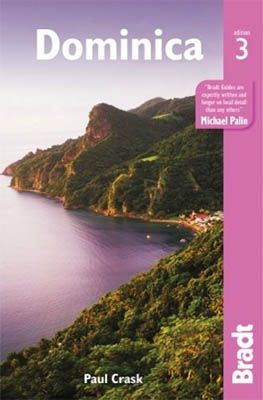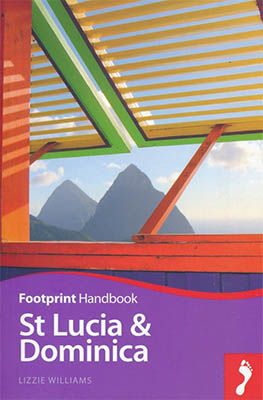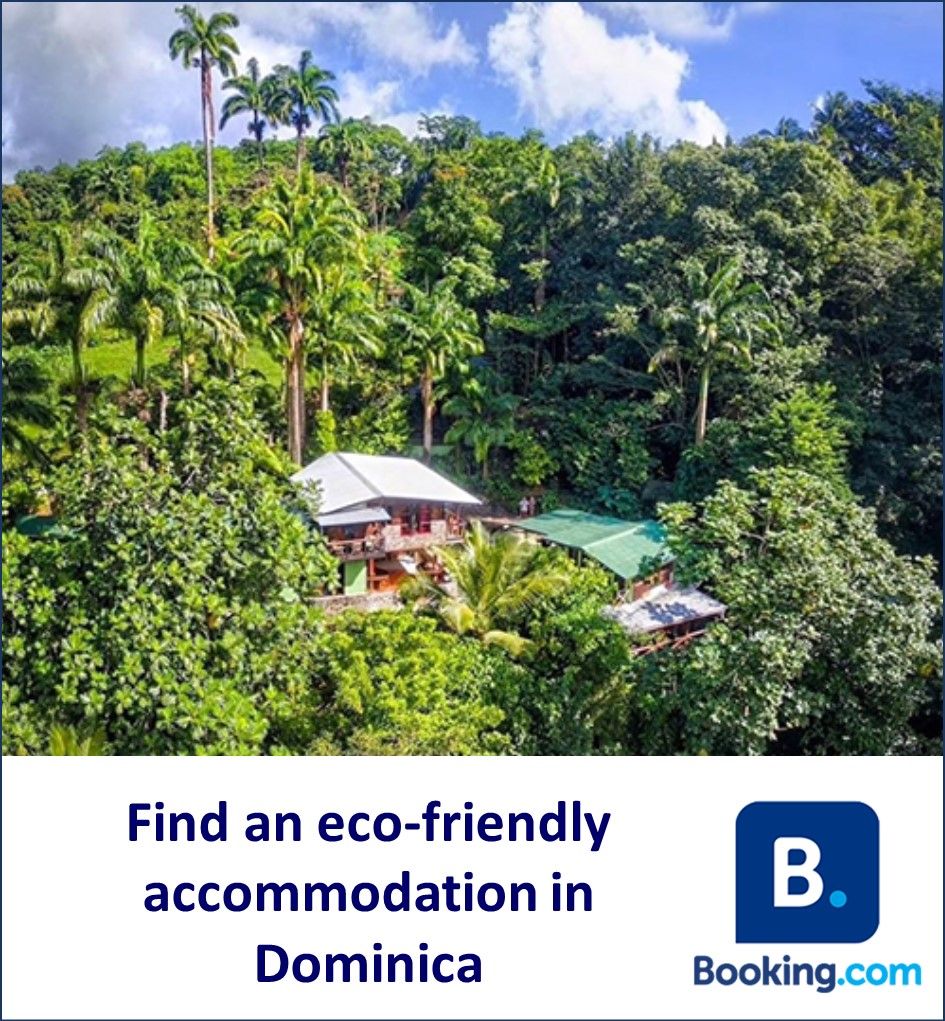The tropical gem Dominica is known as “the nature island of the Caribbean”. The island owes this laudatory title to its spectacular, lush and varied flora. In the heavily forested interior, you will find many waterfalls, rivers, lakes and hot springs. All this is set against the backdrop of an impressive, volcanic landscape full of high mountain peaks.
But it’s not just the fantastic hiking opportunities in nature that make Dominica a dream destination. Along the rugged coastline are rustic, charming coastal villages. In particular, colourful Roseau, Dominica’s capital, has a particularly interesting, cultural – and culinary – experience to offer the traveller. You also have wonderful, both black and white, sandy beaches that you often have all to yourself. A lover of the underwater world? Then Dominica has plenty to offer thanks to its numerous excellent snorkelling and diving spots.
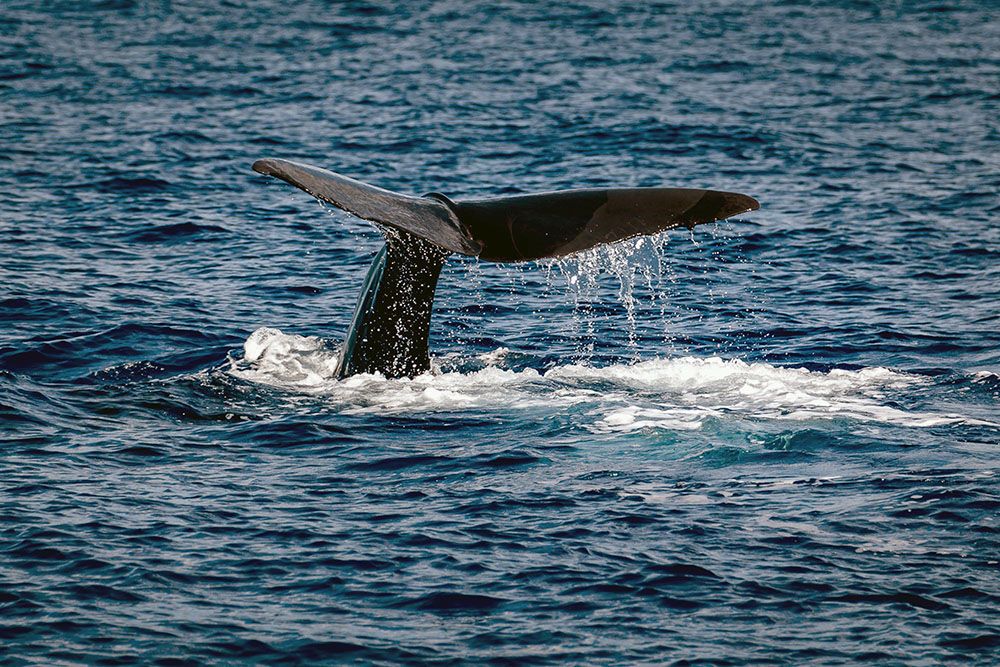
A little bit of history about green Dominica
Dominica was inhabited by Arawak tribes many centuries ago. However, they were driven off the island by Carib Indians around 1300. Columbus was then the first European to visit Dominica on a Sunday (Dominica) in 1493. But because of the fierce Carib population, the Spanish did not settle on the island.
In 1635, the French laid claim to Dominica and started settling on the island. But because they acted badly, their presence degenerated into war with the Caribs. In 1660, a peace treaty was concluded which stipulated that Dominica belonged to the Caribs. Yet in 1805, the island still became a European colony. This time not French but British. Dominica only became independent in 1978 but remained within the British Commonwealth. Several thousand Caribs still live on the island. They are the only remaining population of the pre-Columbian era in the eastern Caribbean.
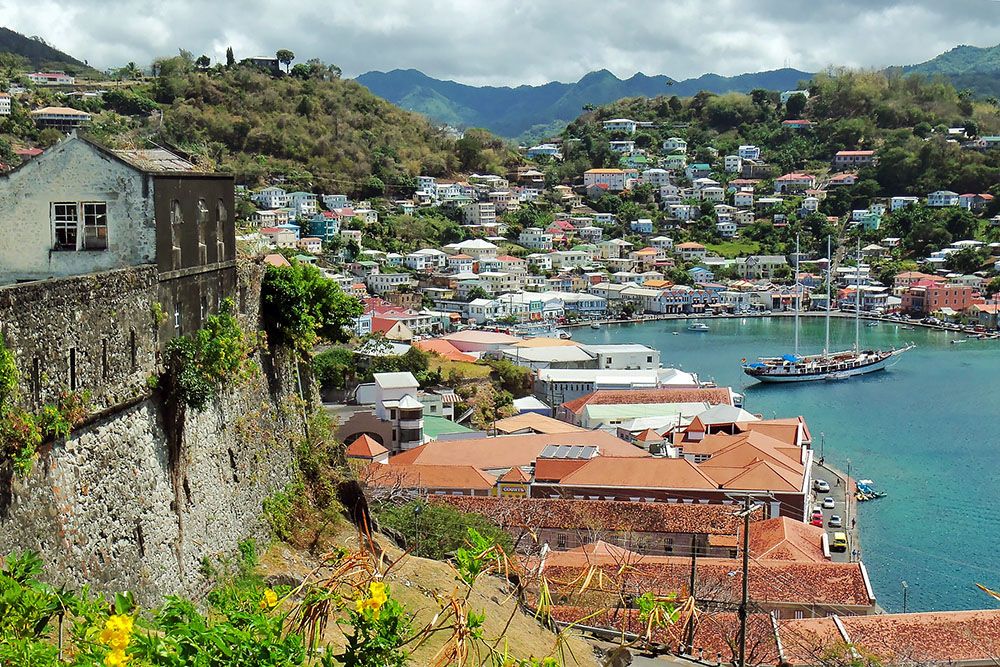
Top highlights of Dominica
As a nature lover, you can easily spend weeks on this tropical island. Apart from cultural trips to towns like Roseau, almost all of Dominica’s highlights are nature-related. Both above and below water. There are too many to mention them all in this blog. Therefore, here are some tips on activities and sights that we think you shouldn’t miss.
Hiking in Dominica
Hiking is our favourite activity on Dominica. There are particularly many wonderful hikes on the island, ranging from easy to seriously challenging. And from short walks to long day hikes or even multi-day hikes. Most of these hikes go to a specific destination, such as a waterfall. Or they lead through one of the national parks. For that reason, below we describe our favourite waterfalls (including link to directions) and briefly highlight the special national parks on Dominica. We mainly use the route descriptions and GPS tracks on alltrails.com.
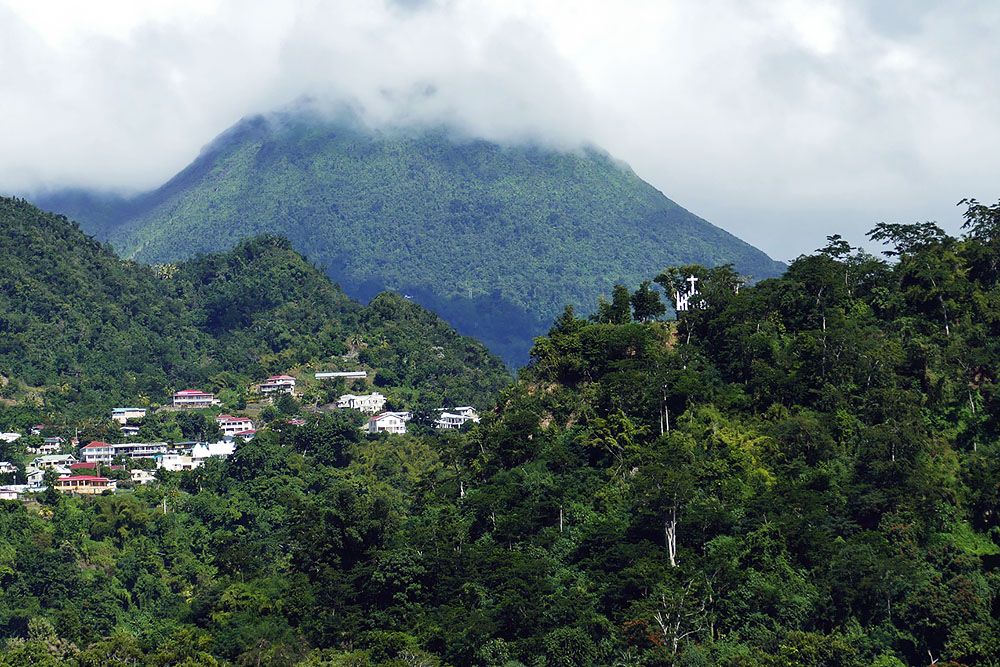
But even outside the national parks, there are beautiful walks that do not lead to a waterfall either. One such walk is the one to Scott’s Head. This beautifully situated village sits on the edge of a bay, the old crater of a volcano. The bay is one of the island’s best snorkelling and diving locations. But you can also hike there. The trail will take you to the top in 15 minutes where you’ll have great views over the bay. View directions and/or download the GPS track here.
The Waitukubuli long-distance walk
The almost 200-kilometre Waitukubuli National Trail is the Caribbean’s only long-distance walk. This hike consists of 14 stages starting at Scott’s Head and ending at Cabrits National Park. The whole route takes about two weeks. You will stay in eco lodges and B&Bs. On the walk’s official site, you’ll find these under each stage. To walk, you need a permit. The nice thing is that you don’t have to walk every stage to still get a good impression of Dominica’s beauty. You can find the route description including GPS track of some of the stages on alltrails.com.
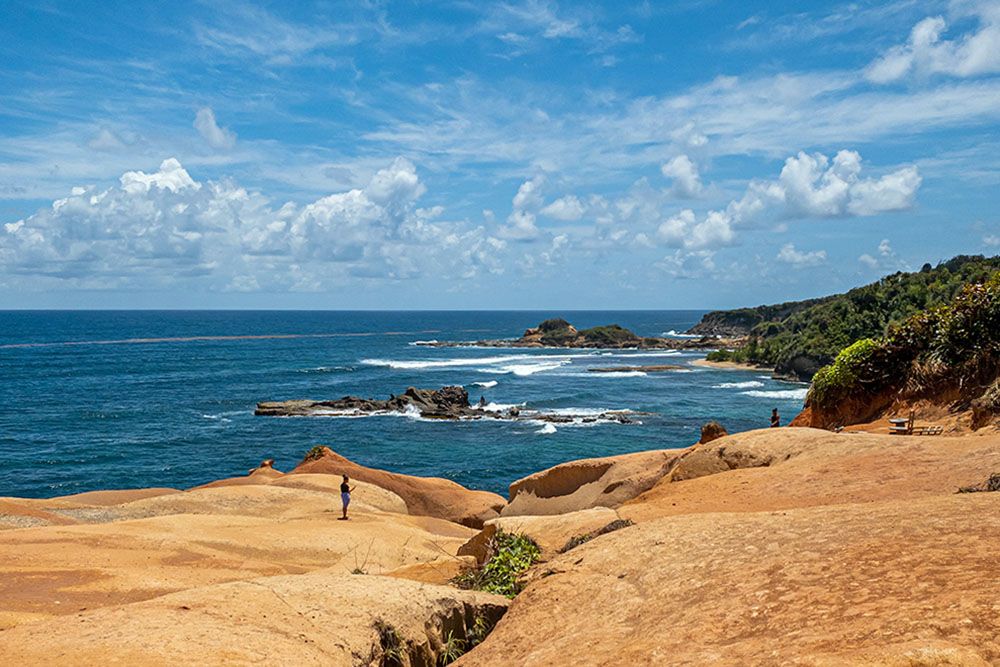
The most beautiful waterfalls on Dominica
Compared to other islands in the Caribbean, Dominica receives relatively high rainfall. There’s a reason why there are 365 major and minor rivers on the island, so one for every day of the year. The big advantage of all that rainwater is immediately seen upon arrival on the island: wherever you look or go, all around you will find nothing but jungle and the most beautiful waterfalls! We have our top seven waterfalls (in alphabetical order) that we don’t want to keep from you:
- Emerald Pool Falls. The path to it is well marked and easy to walk. Count on 15 minutes one way. The basin of the waterfall takes its name from the emerald hue of the jungle when the sun shines through it.
- Middleham Falls. This approximately 60-metre-high waterfall is located in the middle of the rainforest of Morne Trois Piton National Park. The fairly tough hike to it takes about an hour. Perhaps our biggest favourite. View directions and/or download the GPS track here.
- Sari Sari Falls. You will find this 40-metre-high waterfall at La Plaine on the east side of the island. Many consider this the most beautiful waterfall in Dominica. We understand why. But getting there is quite an adventure. For instance, you often have to clamber over rocks and wade through water. Count on at least an hour to an hour and a half for the hike. View directions and/or download the GPS track here.
- Spanny Falls. You’ll find this one near the Emerald Pool. The walk takes about 10 minutes. Like the Emerald Pool, the water has a beautiful turquoise colour. The waterfall is on private property, which is why there is an entrance fee that you pay at the shop.
- Trafalgar Falls. Like Middelham Falls, the falls (one 85-metre and one 40-metre high) are located in Morne Trois Pitons National Park. They are easily accessible from the car park. The walk surrounded by exotic plants takes about 10 minutes. View directions and/or download the GPS track here.
- Victoria Falls. This 60-metre-high waterfall is one of two waterfalls on the eastern side of Dominica. What makes the waterfall unique is the bizarre white/light blue colour of the water pool. Truly fantastically beautiful! The hike from the car park at the Victoria Falls Tavern to the waterfall takes about 45 to 60 minutes.
- Wavine Cyrique. This is one of the few waterfalls that falls directly onto the beach, or into the sea. We did not visit the waterfall ourselves but read on several sites that this is an absolute must-see. However, the hike is not easy and a guide is strongly recommended. You can find a guide through the tourist office in Roseau.
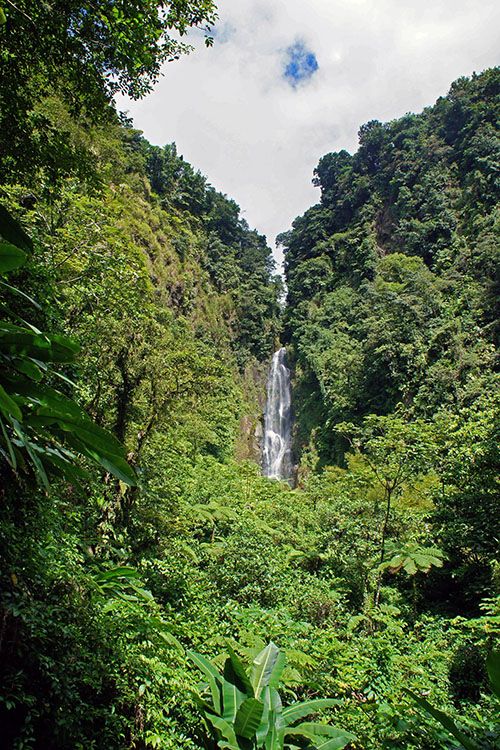
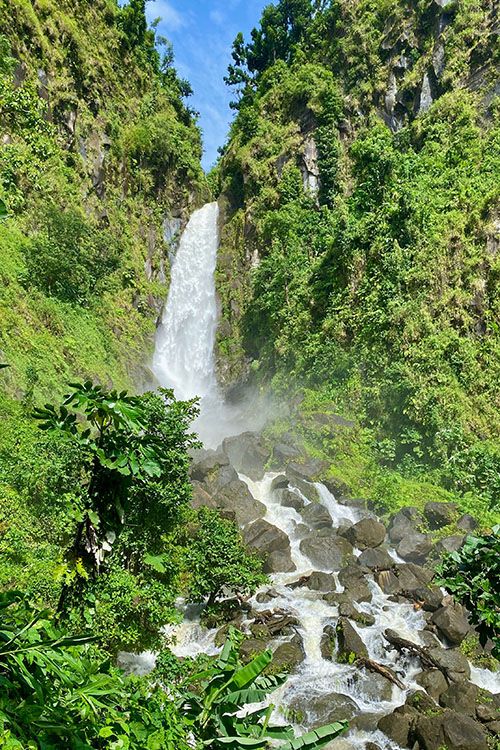
Dominica’s national parks
There are three national parks in Dominica: Morne Trois Pitons National Park, Cabrits National Park and Morne Diablotin National Park. Depending on how much time you have on the island, you may not skip any of the three. If you don’t have that time, at least visit Morne Trois Pitons National Park.
The 17,000-hectare Morne Trois Pitons National Park is a UNESCO World Heritage Site for a reason. The park covers much of the mountainous interior. You will find nothing but jungle, including giant ferns and wild orchids. The highlights are the beautiful lakes, such as the famous Boiling Lake, and many of the most picturesque waterfalls we mentioned earlier: Victoria Falls, Trafalgar Falls, Emerald Pool and Middleham Falls. Also in the park you have Titou Gorge, a narrow gorge to a beautiful waterfall. And there are still boiling mud pools, brightly coloured hot springs and mini-geysers in the “Valley of Desolation”.
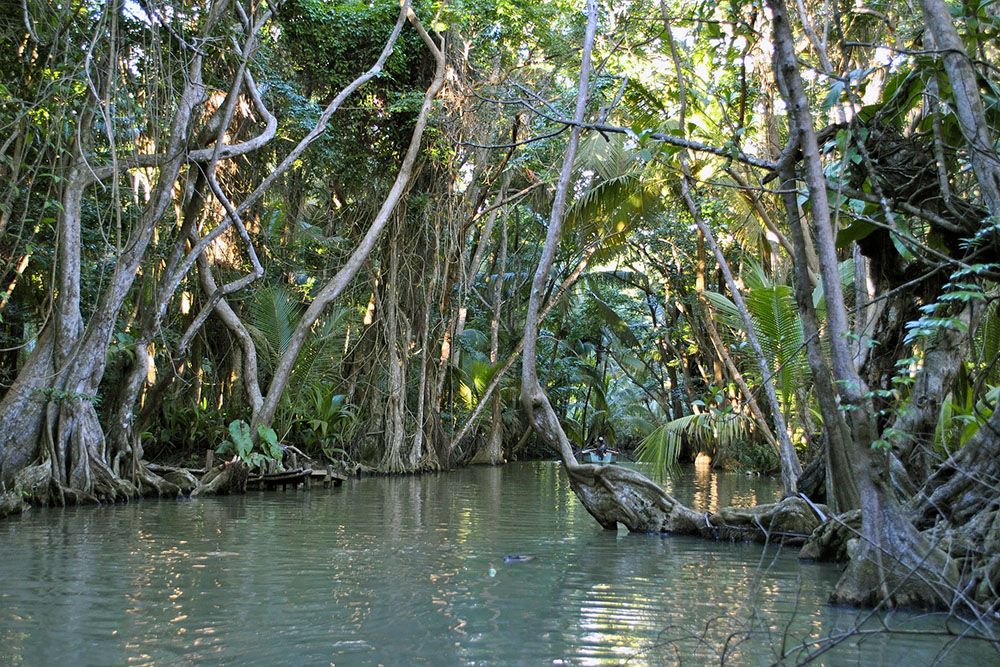
Cabrits National Park is located on a peninsula in north-western Dominica. You have rainforest, wetlands, black sand beaches and colourful coral reefs. The water world here offers excellent snorkelling and diving opportunities. Also in the park are the remains of Fort Shirley, an 18th-century British garrison with stunning views of Prince Rupert Bay. A small museum at the entrance sheds light on Dominica’s colonial history.
The more than 3,000-hectare Morne Diablotin National Park was established in 2000 as a reserve for, among others, the Sisserou parrot: the island’s national bird. You can do some fantastic hiking there. The most popular walks are Jacko Steps and the Syndicate Nature Trail. There is also a tricky but beautiful trail to the 1,447-metre summit of Morne Diablotin.
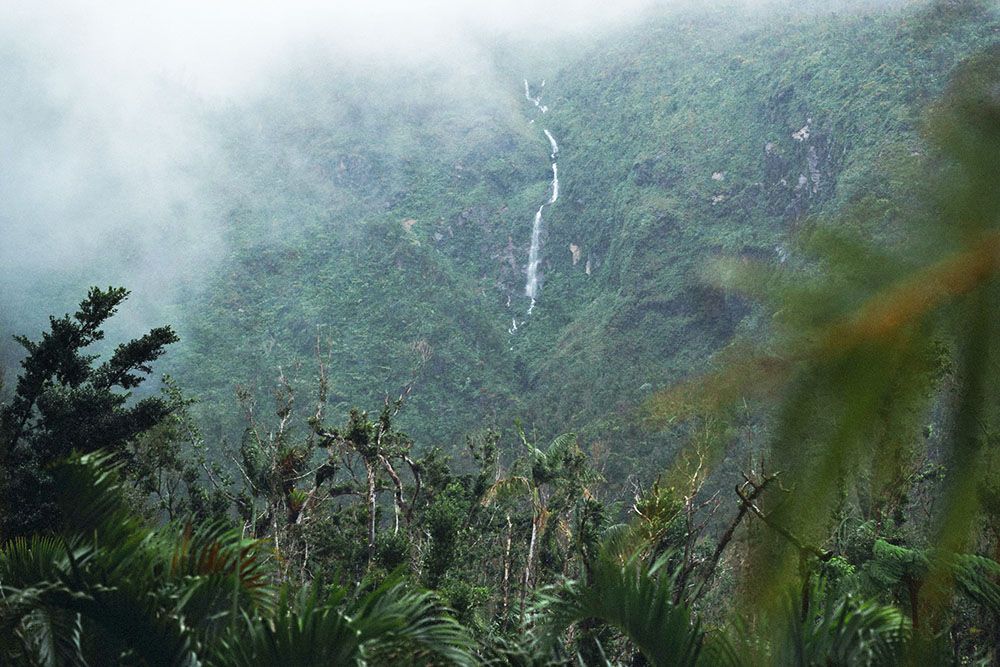
Dominica’s most beautiful beaches
Dominica is best known among visitors for its hikes and nature. But beautiful both black and white sand beaches can also be found on this Caribbean island. One such beach is Batibou near the village of Calibishie in northern Dominica. The beach is surrounded by coconut palms and consists of white sand that flows into clear blue water.
Fairly close to Calibishie is Number One beach. It was a shooting location for two “Pirates of the Caribbean” films. Still, this beach is one of the least crowded because it is difficult to reach and there are no facilities. But if you want a nice stretch of sandy beach all to yourself, this is the beach to be at. Also in the north, you have Pointe Baptiste. Here there are several beautiful beaches, both with white and black sand. These idyllic sandy beaches full of coconut palms are wonderfully quiet and you can have them almost all to yourself.
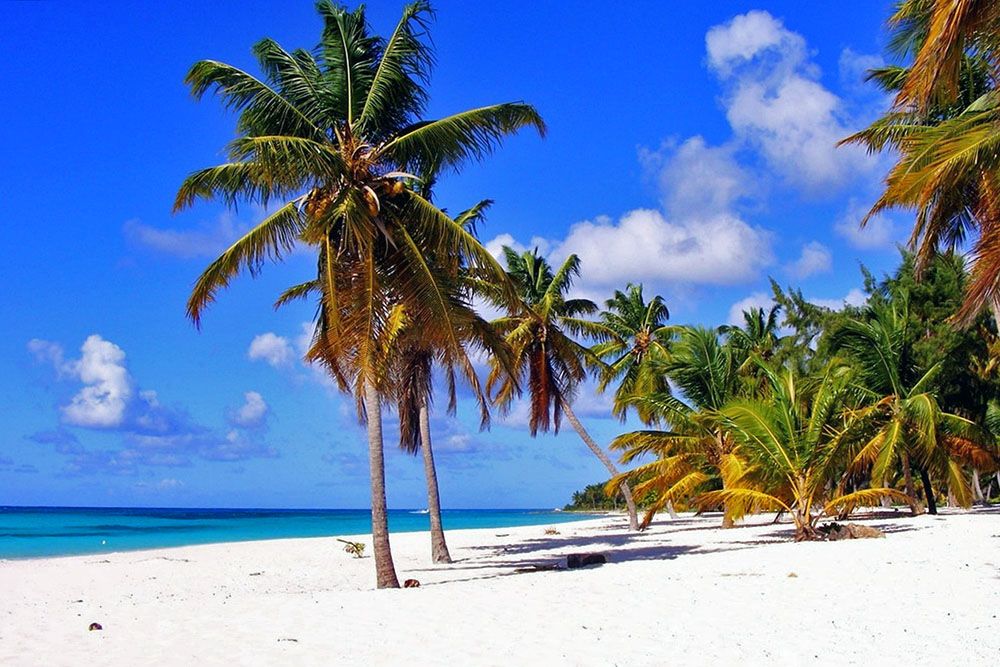
Roseau, the capital of Dominica
Super laid-back Roseau is a colourful jumble of West Indian houses and busy market stalls. You won’t have trendy shops or chain shops here, unlike most Caribbean islands.
Some of Roseau’s attractions include the 19th-century Cathedral of St Patric, the botanical garden and the compact Dominica Museum. Here you will find interesting exhibitions on the slave trade and Creole and Indian culture. Another attraction is the old market. Unfortunately, for centuries the market was mainly used as a slave market. Today, however, the market is the centre of arts and crafts on the island. And the place where you can get super fresh fruit!
For stunning views of the city, take a hike up to the Morne Bruce.
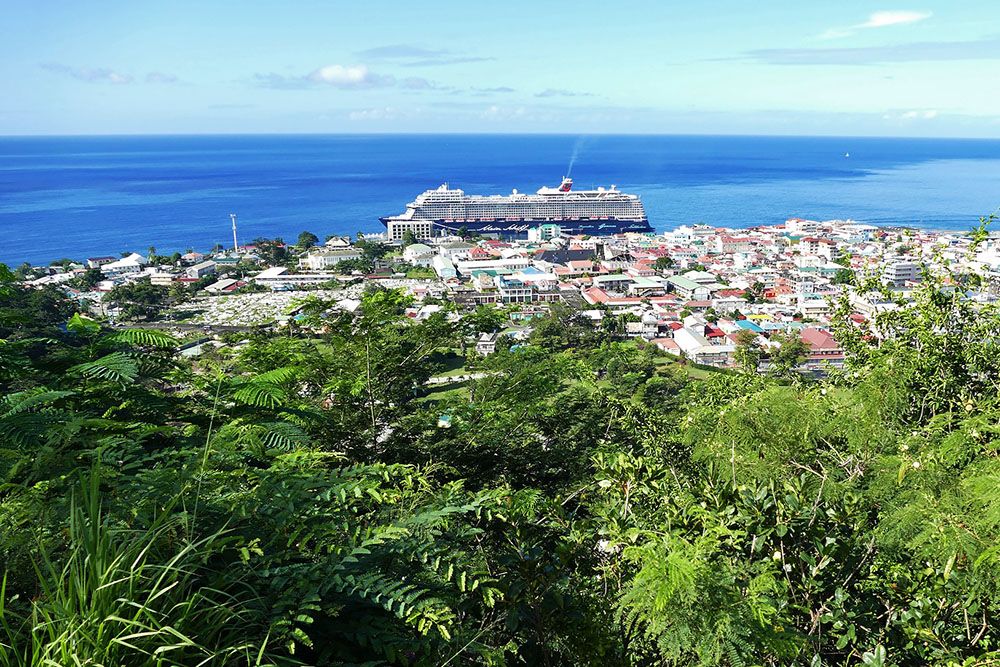
Roseau, the capital of Dominica
Super laid-back Roseau is a colourful jumble of West Indian houses and busy market stalls. You won’t have trendy shops or chain shops here, unlike most Caribbean islands.
Some of Roseau’s attractions include the 19th-century Cathedral of St Patric, the botanical garden and the compact Dominica Museum. Here you will find interesting exhibitions on the slave trade and Creole and Indian culture. Another attraction is the old market. Unfortunately, for centuries the market was mainly used as a slave market. Today, however, the market is the centre of arts and crafts on the island. And the place where you can get super fresh fruit!
For stunning views of the city, take a hike up to the Morne Bruce.
Practicalities for your visit to nature island Dominica
Dominica is located in the middle of the belt of islands in the eastern Caribbean Sea. It is the southernmost island of the so-called Windward Islands of the Lesser Antilles. Just to the north of Dominica is Guadeloupe, and the first next island to the south is Martinique.
Dominica has one airport for passenger flights, namely Douglas-Charles (IATA: DOM). However, the airport is remote near Marigot on the northeast coast. From here, it is best to take a rental car. Travel time to capital Roseau is just over an hour. The quickest way to get there is via Barbados.
Another option to reach Dominica is by boat. "Express des Iles" sails on most days of the week from nearby islands to the small port in Roseau. This option is ideal if you want island hopping. Otherwise, we still recommend flying to the island via Barbados.
Incidentally, you can also visit the island by cruise. Very comfortable but keep in mind that you will then have a tight day for time on the island. A nice long walk is not possible.
The best time to go to Dominica is during the dry season, which is from February to April. May is also fine, but it can get quite hot and muggy by then. Avoid September and October because of the reasonable chance of tropical storms.
If you are on the island for more than one or two days, a hire car is the most practical. You can also go by bus but it is unclear where they stop (there are virtually no official bus stops) and what time. By taxi is a fine, not too expensive alternative to the bus. Do make clear arrangements in advance about the destination and fare.
If you opt for a rental car, preferably take a small 4x4. This is particularly pleasant in the mountains on roads that are sometimes in very bad condition. Incidentally, do not take a large 4x4 as they usually do not fit through the narrow streets in the villages. In Dominica people drive on the left.
The official language on Dominica is English. Most Dominicans do speak it with a heavy Caribbean accent.
The mains voltage in Dominica is 230 volts / 50 Hz. Sockets there are type D and G. If you come from the UK or Ireland, you will not need an adapter.
You do not need a visa for a holiday in Dominica.
In Dominica, security risks are similar to those in our own country. There is little crime. Still, the advice is to use your common sense. For instance, walking the streets alone at night completely clad in jewellery may not be a good idea. Anyway, always read the most up-to-date travel advice before you leave for the island.
Dominica does not have the large-scale resorts you find on many other islands in the Caribbean. This is partly because you only have one small airport (for tourists) on the island. Most visitors reach Dominica from other islands, or they are there as cruise tourists for just a day. Here you have an overview of all accommodation in Dominica. Can't decide where to stay during your visit to Dominica? Then look for accommodation in Roseau as from here you can also quickly reach the main national park: the Morne Trois Pitons National Park with its many waterfalls and hiking trails.
Dominica's cuisine is distinctly Caribbean. You will find mainly seafood, including dorado, kingfish and tuna. Other dishes include chicken, pork, lamb, beef and goat. The meat is flavoured with lime, fresh herbs, chillies and spices. But the dish not to be missed while visiting Dominica is "Sancocho Dominicano": a stew of meat and vegetables prepared in fresh coconut milk with ginger and curry, among others.
Our advice is to eat especially at the small family restaurants, local eateries, small guesthouses and cafes. Every meal there is made with love, carefully prepared and, more importantly, perfectly seasoned. Here is a complete list of places to eat in Dominica.

